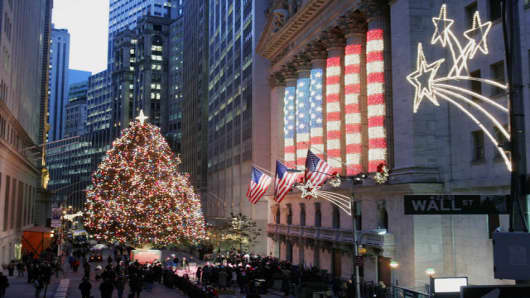Depending how you look at, the Santa Claus rally is anything between a week and several weeks long.
Coined in 1972 by market historian Yale Hirsch, who founded the Stock Trader’s Almanac, the Santa rally originally applied to the last five trading days of December and the first two of the New Year.
Lots of Uses
“People use it to refer to any number of rallies that occur in the last quarter of the year,” says Jeffrey Hirsch, who succeeded his father at the Almanac.
That’s partly because November and December – along with January – are the three best months of the year for stocks.
For each of the past 40 years, stocks have posted solid and sometimes spectacular gains between their bottom in November or December and high in December or January.
Between 1968 and the collapse of the tech bubble in 2000, the Dow gained an average of 10.62 percent. Again, the uptrend remained in place during the bear market years that followed an thereafter.
Jim Awad, vice-chairman of JW Stewart Asset Management, is a believer in the Santa Claus phenomenon, explaining that it is an “optimistic and happy time of year and money managers want to finish the year strong.”
Other Factors
Buying is also attributed to tax considerations, investment of year-end bonuses and anticipation of the January effect, another phenomenon in which stocks typically gain during the first month of the year.
On a less debatable level, trading volume is relatively light -- pessimists are on vacation --- and susceptible to an updraft.



